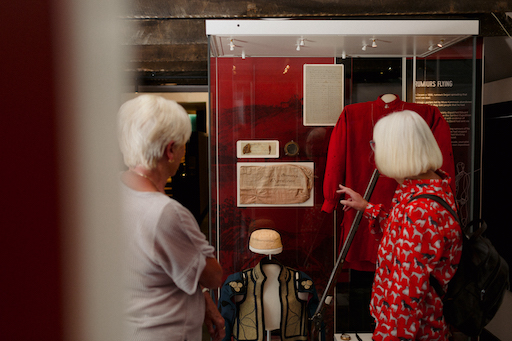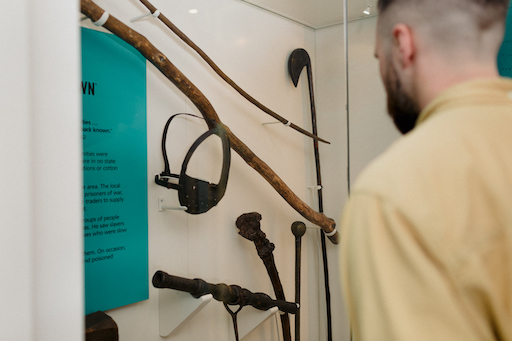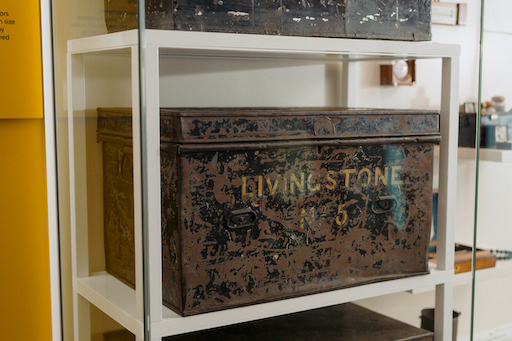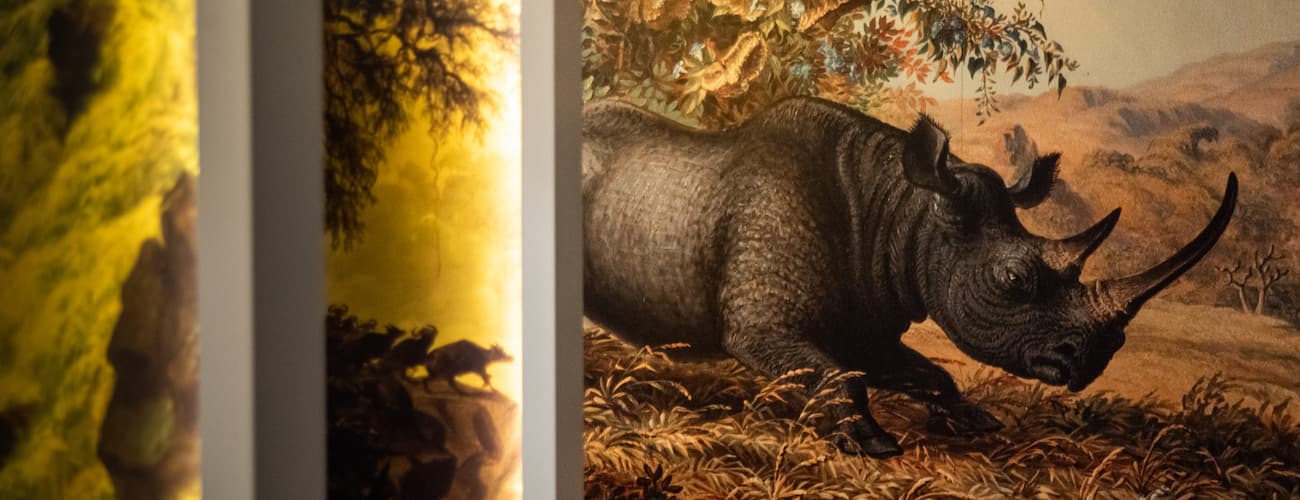Exhibition
Our new exhibition follows David Livingstone’s story, from birth to death. Each gallery is an era in the famous Scot’s life.
Our aim is to give a balanced summary of Livingstone’s life and highlight the stories of those who influenced and supported him, making his achievements possible.
Our exhibition does touch on the impact of the East African Slave Trade and there are items of a sensitive nature on display.
Birth and Early Life
Visitors will see the room where Livingstone was born and brought up. We’ll learn about his humble beginnings working as a child labourer at Blantyre Works Mill and be introduced to his love of reading and exploring.
This gallery displays Livingstone’s Christening shawl, his family bible and the brush he used while working as a piecer in the mill.
University and Missionary School
We introduce the people who influenced Livingstone in his education and career, some of whom went on to be key funders of his future expeditions. We also touch on Livingstone’s semi-disastrous training as a Preacher!
Here, you’ll see the certificates Livingstone was awarded from his university, the Andersonian Institute (now the University of Strathclyde).
Arriving in Southern Africa
We travel with Livingstone to Southern Africa, where he began work in African mission stations, including those at Mabotsa, Kuruman, and Kolobeng.
It was in Mabotsa (South Africa) that he survived an attack by a lion, in Kuruman (South Africa) that he fell in love and married his wife, Mary and in Kolobeng (Botswana) where he baptised Chief Sechele I of the BaKwena, who became instrumental in the spread of Christianity in Southern Africa.
This part of the museum shows some of our collection of African objects, a letter from Livingstone’s early years working as a missionary, as well as objects belonging to his wife, Mary.
Trans-Africa Expedition
Livingstone successfully navigated close to 6,000 miles (9,650 km), exploring and mapping the landscape from the west coast of Angola to the east coast of Mozambique. He hoped to find suitable locations for new European mission and trading stations.
During this expedition, Livingstone became the first white European to see wonders such as Mosi-oa-Tunya, which he renamed Victoria Falls.
The gallery uses full colour versions of paintings by Thomas Baines, storekeeper and artist who later accompanied Livingstone on the Zambezi Expedition. The ambient audio in the space (a combination of lion roars, hippo grunts, elephant trumpeting, and birds squawking) is intended to represent the wildlife that Livingstone encountered and studied during this journey.
The Trans-Africa gallery displays Livingstone’s navigational objects, plus tusks, birds and other natural items collected by Livingstone. Don’t miss Livingstone’s consular uniform as you leave the gallery – it gives a great indication of Livingstone’s height and size.
Zambezi Expedition
Livingstone’s geographical achievements had been widely celebrated. His reputation as a great explorer secured him funds for his next expedition along the Zambezi River.
With a large crew, Livingstone aimed to set up a mission and trading station, using the Zambezi River as a ‘highway’ into the Central African interior.
The blue in this gallery reflects the story that is told: how a promising expedition along the Zambezi River soon turned sour and ended in death and disaster. It was in this region that Livingstone saw first-hand the harrowing impact of the East African Slave Trade.
The audio reflects the sinister buzzing of the mosquitos that lurked along the riverbanks and added to the lethal failure that was Livingstone’s second expedition.
The Zambezi Expedition gallery holds objects which allow us to show the human cost of the East African Slave Trade. Here, you can also see examples of Malawian artisanship collected by both Livingstone and other members of his expedition.
Nile Expedition
Livingstone set out once again, this time he hoped to find the source of the Nile. He believed that the fame it would bring him would secure support for his in the fight against slavery.
He was also asked to record and report back about the East African Slave Trade by the British Government.
It was during this expedition that Livingstone met Henry Morton Stanley, a journalist intending to find Livingstone (who was, at the time, believed to be lost and even assumed dead). It was during their first meeting that Stanley uttered the famous phrase, ‘Dr Livingstone, I presume?’.
The red gallery is designed to imply disorientation, mirroring the way Livingstone must have felt as he found himself more and more lost.
Our Nile Expedition display features objects that belonged to two of Livingstone’s most famous crew members, James Chuma and Abdullah Susi. Here, you can also see a selection of Livingstone’s field diaries and journals.
The Final Journey
Livingstone died searching for the source of the Nile.
Eight tableaux, designed by sculptor Charles d’Orville Pilkingston Jackson, reflect on key moments in Livingstone’s life. These tableaux are further explored in our Legacy Space.
The ‘Final Journey’ details the journey taken by Livingstone’s crew, as they carry the explorer’s body over 1,000 miles to the east coast of Africa, where it was transported back to Britain.
Livingstone was given a high profile funeral in Westminster Abbey.
The Final Journey gallery show pieces of the mvula tree, under which Livingstone’s crew buried his heart and organs. You can also see a Royal Geographical Society Silver Medal, awarded to Ulemengo for his role transporting Livingstone’s body to the east coast of Africa.
The Legacy Space
The exhibition concludes by examining and questioning the legacy Livingstone left behind, through interactive displays and an animation of the Pilkington Jackson Tableaux.
Our exhibition is designed to give a more balanced view on Livingstone. We intend for audiences to leave the museum both informed and ready to challenge idealised narratives around Livingstone – e.g. that he was a lone explorer.
We encourage people to leave their feedback on Livingstone and how the exhibition has impacted their views on the Scot.
The museum is closed during January and February 2026 for updates to the museum, and we will reopen at the end of March 2026.
Prearranged groups are welcome to visit any time (including January and February 2026). Please don't hesitate to contact bookings@dltrust.uk for further information.









